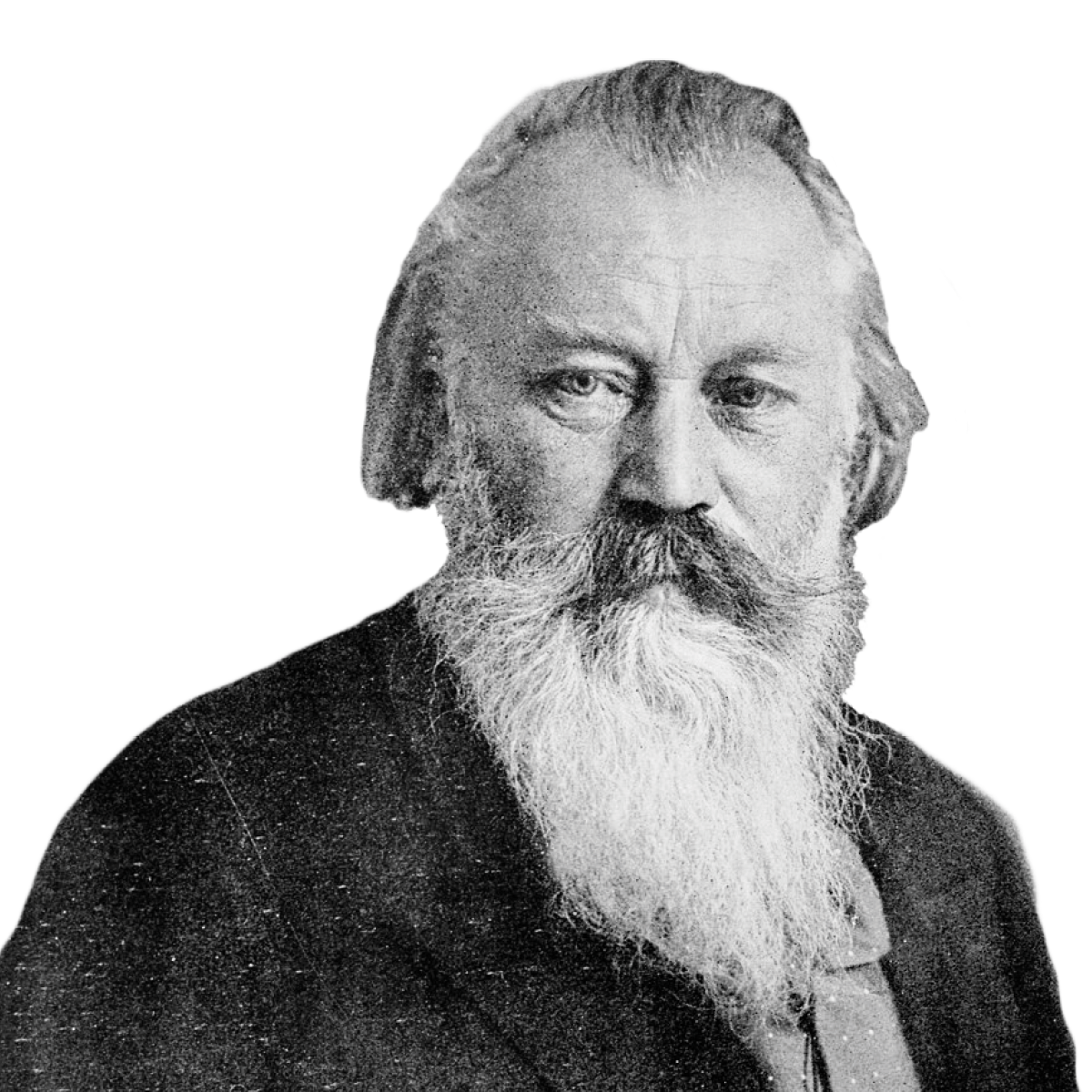
|
Symphony No. 1 in C minor, Opus 68 |
Composed: 1862-76 Estimated length: |
|
Born on May 7, 1833, in Hamburg, Germany; Died on April 3, 1897, in Vienna, Austria |
|
|
First performance: November 4, 1876, in Karlsruhe, with Felix Otto Dessoff conducting. |
|
|
First Nashville Symphony performance: February 20, 1951, with William Strickland conducting at Ryman Auditorium. |
|
Rethinking conventional formats—like the rondo, in the case of Jessie Montgomery’s Rounds, to adapt the concerto idea for a contemporary sensibility—has produced powerful results throughout music history. Though using a familiar four-movement design and intensely self-conscious of his historical predecessors, Johannes Brahms conceived the symphony in a new way to take account of his moment in the later 19th century.
But getting there took immense creative struggle—one reason for the long, arduous journey toward completing his First Symphony. Not only did Brahms feel himself to be competing with the weight of tradition (above all, the legacy of Beethoven); he also seemed to be going against the grain by persevering in a genre considered obsolete by many of his contemporaries.
In this music, Brahms revisits classical forms while finding new ways to use them as a vehicle for the heightened emotional content of a more subjective era. The timpani’s ominous pounding at the outset underscores the impression of inexorable tragedy. Beethoven had recalibrated expectations for how a symphony should end with his choral Ninth. Brahms takes up the challenge in his First (but without voices or text), making the epic final movement carry the full gravitational force of the whole to spectacular effect.
WHAT TO LISTEN FOR
Following a substantial slow introduction, Brahms changes gears with an agitated Allegro that develops thematic material already presented (in concentrated form) in the introductory section. An unexpected calm descends towards the end of the movement, foreshadowing the celestial vision to come in the finale.
The two middle movements allow for a relaxation from the high drama of the big movements surrounding them. An outpouring of Brahmsian lyricism graces the Andante, which veers toward elegy in its sublime final pages. Brahms offers as the third movement a pastoral intermezzo instead of a boisterous scherzo, though the rhythmically dynamic middle section offers vigorous contrast.
A slow, suspense-filled introduction echoes the start of the First. This leads to a tense climax, but the vista shifts dramatically, opening the way to breakthrough as the horns resound with a simple tune in purest C major. (Brahms claimed he had heard it played by an alphorn while traveling in Switzerland.) The Promised Land it heralds takes shape in the main Allegro as a grand string melody that is as sturdy and reassuring as a church chorale. This melody is often compared to the tune Beethoven used to set the “Ode to Joy” in his Ninth, but Brahms makes the case for the relevance of the purely instrumental symphony in the story of unbridled triumph he tells with this music. Far from giving up on the symphony as a dead end, Brahms reclaims and reinvigorates it for his troubled era—and for his successors.
Scored for 2 flutes, 2 oboes, 2 clarinets, 2 bassoons, contrabassoon, 4 horns, 2 trumpets, 3 trombones, timpani, and strings
− Thomas May is the Nashville Symphony's program annotator.